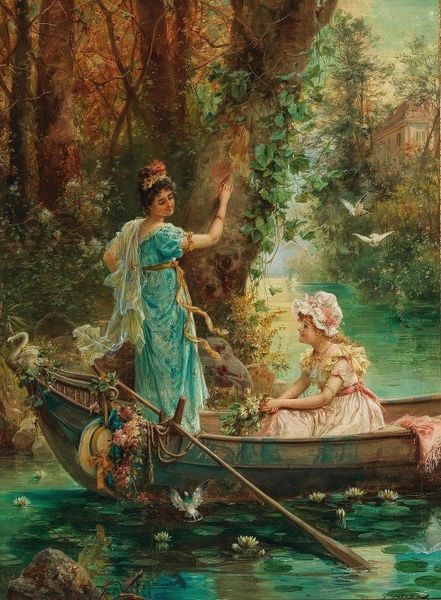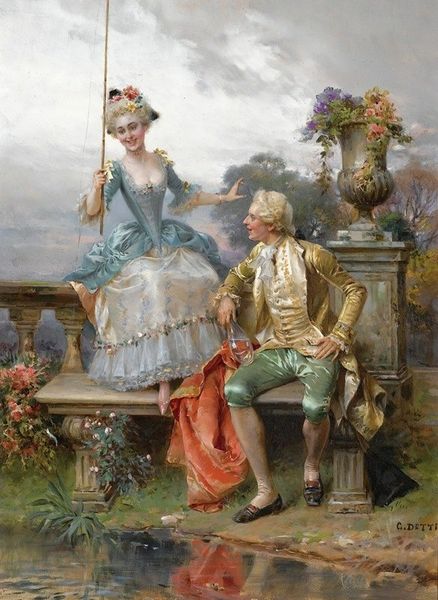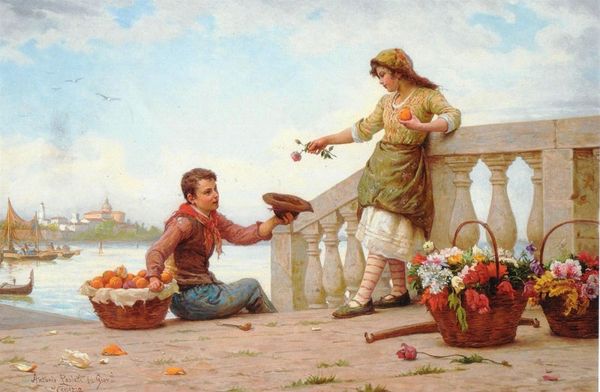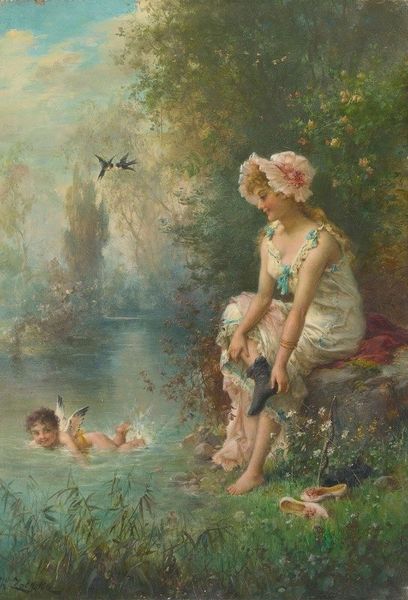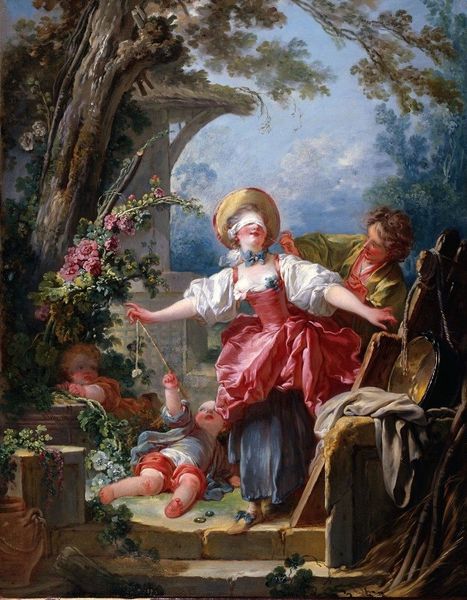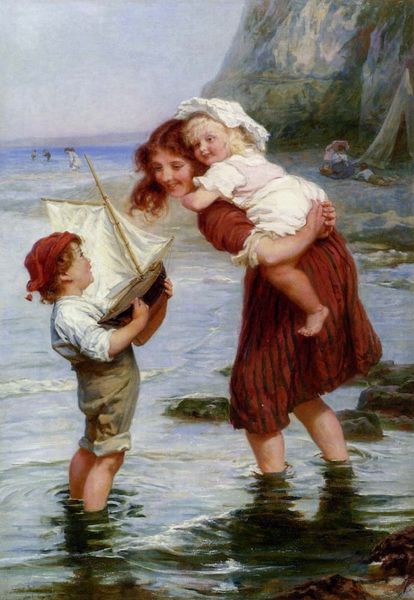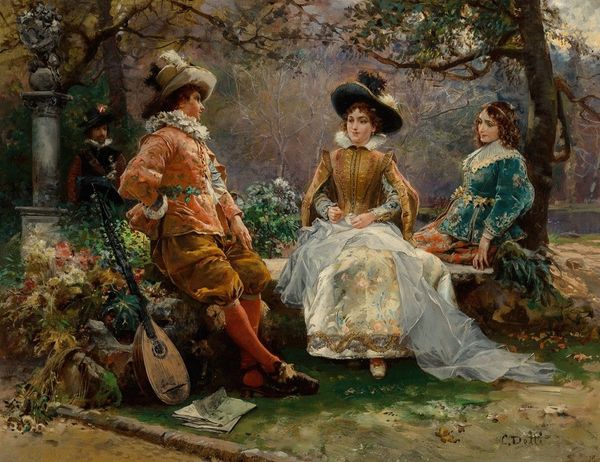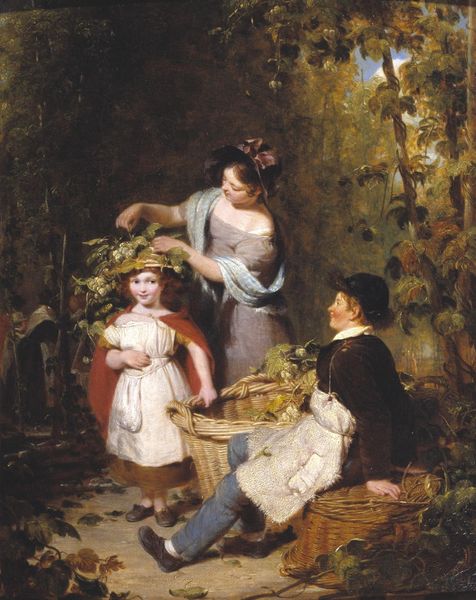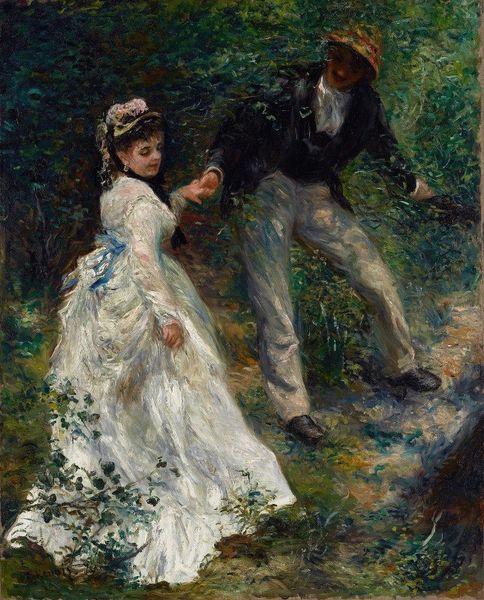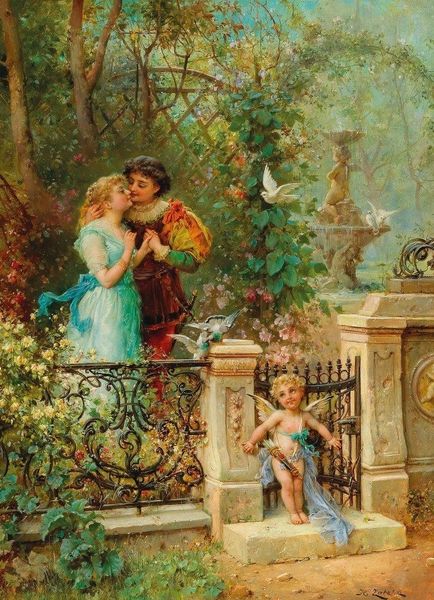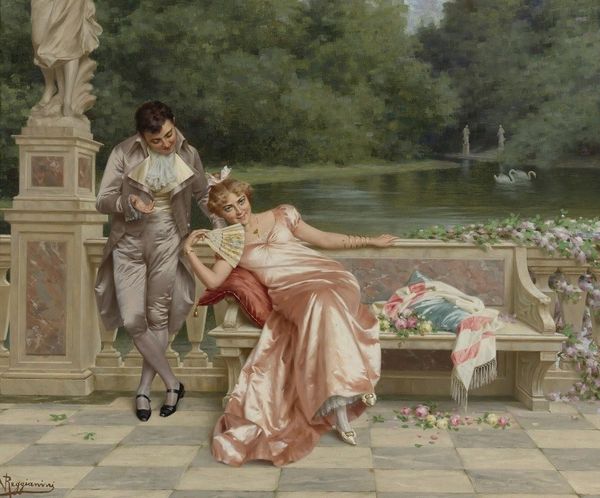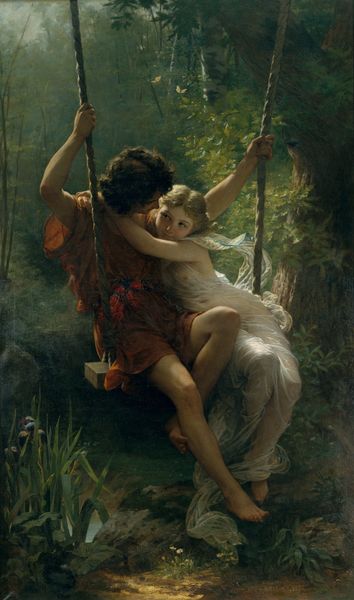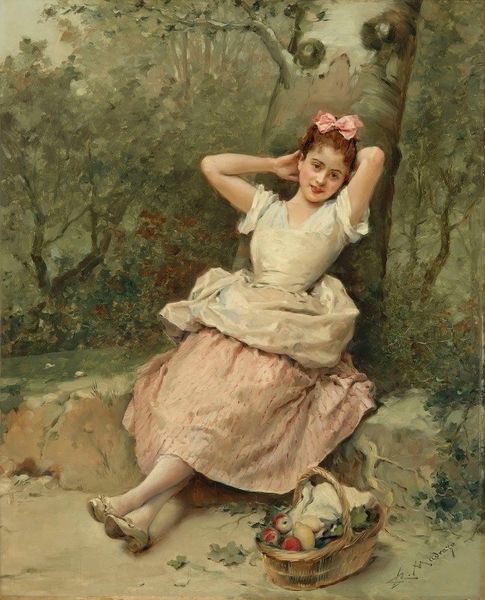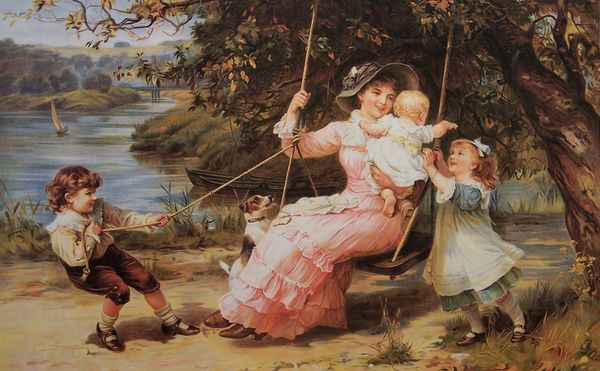
painting, oil-paint
#
gouache
#
figurative
#
narrative-art
#
painting
#
impressionist painting style
#
oil-paint
#
landscape
#
figuration
#
oil painting
#
romanticism
#
painterly
#
genre-painting
#
academic-art
Copyright: Public Domain: Artvee
Curator: Ah, yes, “Très Galant” by Cesare Auguste Detti. It evokes a rather strong emotional response at first glance, doesn't it? What impressions do you have of it? Editor: Rococo sweetness and pastoral artificiality immediately spring to mind. It's cloying but visually appealing. The delicate palette and the arrangement of the figures convey a sort of saccharine ideal of romance. Curator: Absolutely, it taps into that longing for idealized love, doesn’t it? This is typical of Detti who, painting much later than the actual Rococo period, demonstrates a late 19th-century taste for its fanciful style. You can certainly feel how paintings like these would function in the cultural marketplace of that period. Editor: The clothes practically scream of a bygone era, resurrected for the purposes of, well, what exactly? Escapism, maybe? How does this idealized version of history reflect on the contemporary audience for which it was made? Curator: It absolutely offered an escape. But also, consider the symbolic language employed. The couple traversing the stream can be seen as a metaphor for navigating the challenges of courtship. The carefully orchestrated natural setting—shepherds, sheep grazing—functions to reinforce idealized visions of pre-industrial society as a site of leisure. Editor: The setting is highly manicured. Even the "nature" feels like theatre. I find it interesting how genre painting like this catered to a specific bourgeois desire. This feels constructed from the ground up to create a vision of how society should appear. Curator: Right, the theatrics underscore the cultural values they were trying to promote. There’s also that undercurrent of sexual tension so carefully coded, adding to the viewing pleasure for a certain segment of the late 19th-century public. Editor: So in essence, Detti is playing with our yearning for both love and an imagined idyllic past. It becomes a symbol not just of romance, but a whole set of social yearnings and manufactured realities, designed for bourgeois sensibilities. Curator: Exactly, and in considering how those longings manifest, we gain a deeper understanding of the social forces that shaped our world. Thanks for your input; very helpful, I think, in our overall evaluation. Editor: My pleasure. This was much more than pretty clothing after all; rather, something about how constructed worlds resonate today.
Comments
No comments
Be the first to comment and join the conversation on the ultimate creative platform.
